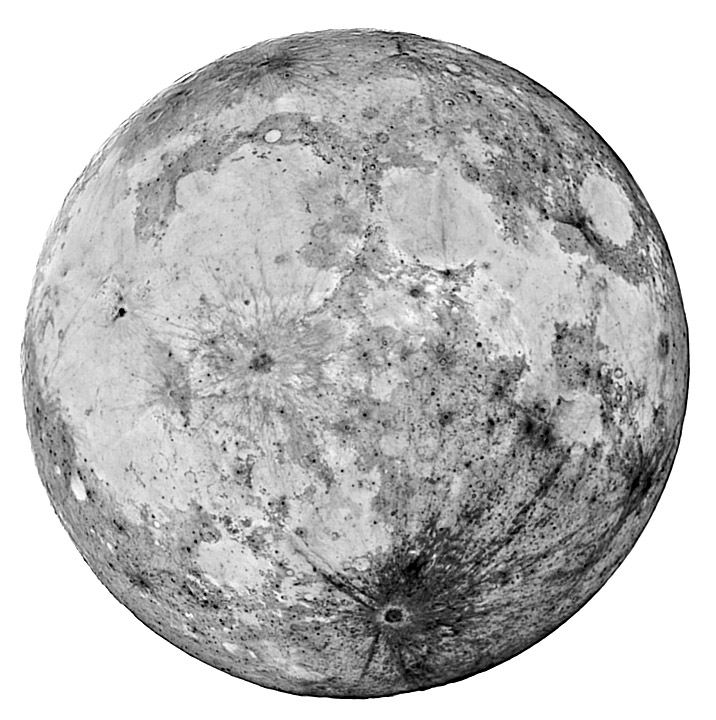
image by [mailto: Rob Kaufman], Australia
Looking in new ways provokes new observations and if we are lucky, new understanding. Rob’s remarkable image (remarkable partially because it was acquired with a 4.5″ reflector) does what all negative (bright and dark reversed) lunar images do, it focuses our attention on crater rays. I must admit that rays are the most unpredictable aspect of young craters. We can see that by comparing the biggest ray systems. Tycho’s rays (besides being asymmetric because of an oblique impact) are often wide near the crater and taper hundreds of kilometers away. And some Tycho rays are very fine, hardly showing up here. The rays of Copernicus are very different; to the north and west there are parallel rays, but more thin ones extend toward the south. Kepler’s rays seem similar to those of Copernicus, but the rays of Aristarchus (which is 40 km in diameter, vs Kepler’s 32) are all very fine and don’t seem to extend very far. And Aristarchus’ rays are most prominent to the southeast, but it isn’t clear that it was an oblique impact. Why do rays differ so much?
Technical Details:
June 11, 2006, ~07:48 - 08:01UT. 4.5″ f/8 Newtonian reflector + Celestron NexImage; processed in RegiStax v3.23. CAW discovered this image on LPOD Photo Gallery - a great resource with 927 images so far!
Related Links:
Rükl chart: all of them
Crater rays abstract
COMMENTS?
Click on this icon File:PostIcon.jpg at the upper right to post a comment.



